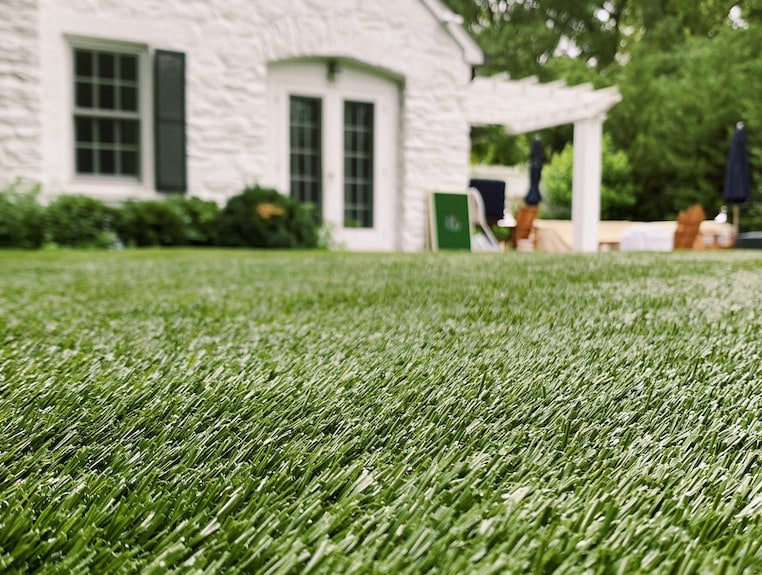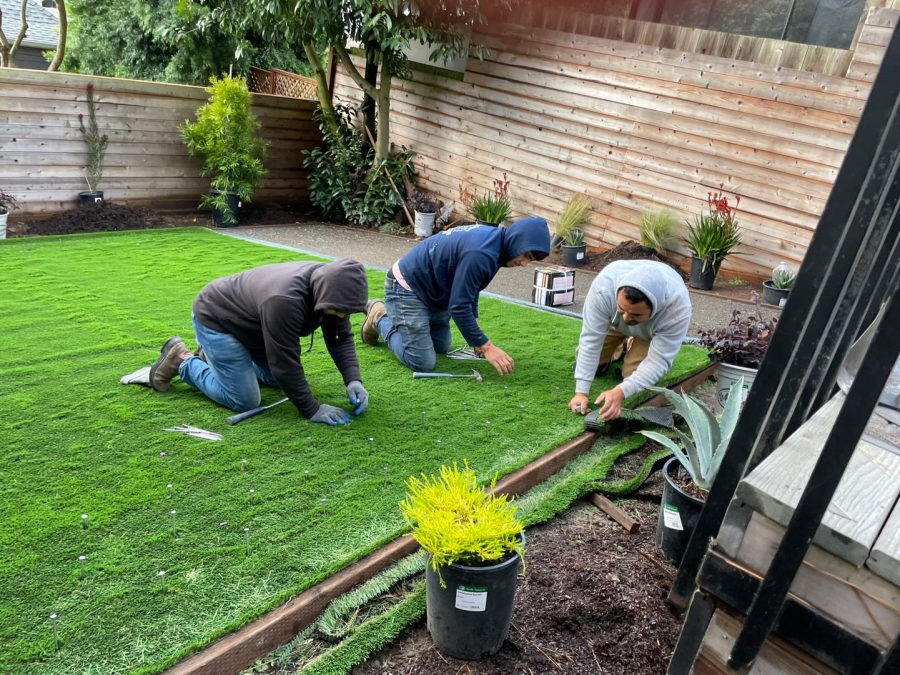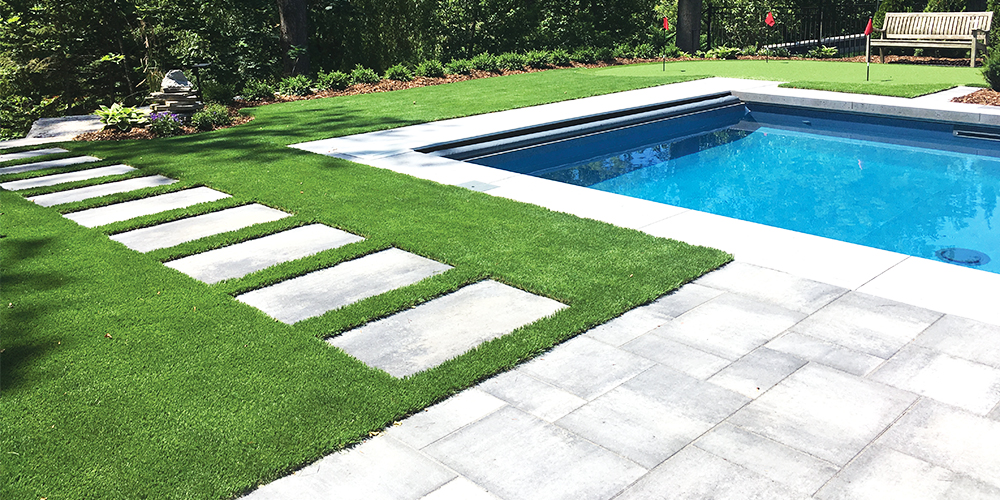High-Quality Arizona Turf Solutions for a Stunning and Green Landscape
Wiki Article
Look Into the Environmental Conveniences of Opting for Synthetic Grass Solutions
The adoption of fabricated grass remedies provides an engaging chance to address pressing ecological challenges. By dramatically decreasing water use and reducing the application of damaging chemicals, these choices not just promote lasting landscape design but likewise secure neighborhood communities.Water Preservation Benefits
One of the most significant benefits of artificial turf is its ability to conserve water. Traditional grass yards need substantial watering, particularly in locations prone to dry spell or water constraints. In comparison, fabricated lawn does not require watering, significantly minimizing the total need for water sources. This function is especially valuable in dry areas where water shortage is a pressing concern.By eliminating the demand for regular watering, man-made turf adds to lasting landscape techniques and helps mitigate the ecological impact of extreme water usage. The conservation of water extends to the reduction of overflow, which can lead to dirt disintegration and river pollution.
Additionally, the setup of synthetic grass enables house owners and districts to allocate water resources much more efficiently, concentrating on vital usages such as alcohol consumption water and farming. The change in the direction of fabricated turf not only advertises responsible water use but also lines up with wider ecological objectives targeted at protecting natural deposits.
As neighborhoods progressively prioritize sustainability, the water conservation benefits of synthetic grass offer a compelling case for its fostering in household and industrial landscape design tasks.
Minimized Chemical Usage
The shift to synthetic turf considerably decreases the dependence on chemical therapies typically used in all-natural lawn upkeep. Standard lawn monitoring commonly includes the application of plant foods, pesticides, and herbicides to promote growth and control bugs. These chemicals can position threats to human health and wellness, local wild animals, and the environment, adding to soil and water contamination.In comparison, synthetic lawn eliminates the demand for these damaging substances. When mounted, it needs marginal upkeep, mostly including routine cleansing and occasional infill replenishment. This reduction in chemical use not just benefits the instant environment yet additionally adds to more comprehensive environmental stability. By minimizing the release of artificial substances right into the community, synthetic grass promotes healthier dirt and water supply.
In addition, the lack of chemical runoff associated with synthetic grass installments aids protect local waterways from contamination, supporting water life and preserving biodiversity. Arizona artificial turf. As areas increasingly prioritize sustainable practices, selecting fabricated lawn offers a sensible remedy that lines up with environmental conservation goals. Via this change, homeowner can enjoy lush environment-friendly rooms without compromising environmental health, leading the way for a much more sustainable future
Lower Carbon Impact

Moreover, the installment of synthetic lawn can result in substantial water conservation. All-natural lawns require significant quantities of water for irrigation, which not only contributes to the carbon impact related to water removal and therapy but also stress neighborhood water resources. In contrast, synthetic grass needs very little upkeep, calling for no watering, thereby substantially reducing water usage and its connected energy expenses.
Furthermore, the long life of artificial turf contributes to its decreased carbon influence. With a lifespan of up to 15 years or more, the requirement for constant substitutes is diminished, our website resulting in less waste and reduced power intake in manufacturing and dealing with standard yard alternatives. On the whole, synthetic grass offers a sustainable option for view it now ecologically mindful landscape design.
Environment Conservation
Habitat preservation is a vital consideration in the debate over landscape design selections, especially when contrasting synthetic turf to all-natural lawn. Natural grass yards usually call for substantial maintenance, including making use of pesticides, herbicides, and fertilizers, which can negatively impact neighborhood ecological communities. These chemicals can seep right into the soil and waterways, damaging native vegetation and fauna and disrupting regional habitats.
Artificial turf eliminates the requirement for dangerous chemicals, therefore shielding nearby wild animals and maintaining the integrity of surrounding communities. The setup of man-made grass can lead to the conversion of former turf areas into more biodiverse landscapes, such as pollinator yards or indigenous plant locations, which can sustain neighborhood wild animals.
Ultimately, the transition to synthetic turf not only saves water and decreases upkeep initiatives but likewise promotes a more unified partnership between human activities and the native environment, advertising environment preservation while doing so.
Long-Term Sustainability
Lasting sustainability is an essential consider reviewing the benefits of synthetic lawn over standard yard lawns. Among the most substantial benefits of synthetic grass is its toughness; it can last as much as 15-20 years with minimal upkeep, whereas natural lawn requires constant reseeding and replacement. This long life minimizes the need for continuous resources, such as water, plant foods, and pesticides, which are necessary for maintaining a healthy and balanced turf yard.Furthermore, synthetic grass adds to a reduction in carbon exhausts connected with grass care tools. Traditional yards frequently require gas-powered mowers, leaners, and blowers, all of which contribute to air contamination. Arizona turf. In contrast, synthetic grass eliminates the requirement for such devices, advertising a cleaner environment
Additionally, the production of synthetic grass progressively makes use of recycled products, improving its sustainability profile. As suppliers adopt eco-friendly practices, the ecological impact of artificial turf remains to diminish.

Conclusion
The adoption of synthetic grass options offers significant environmental advantages, including substantial water conservation, reduced reliance on hazardous chemicals, and a lower carbon footprint. Fabricated lawn aids in maintaining natural environments by lessening land disturbance and promoting long-lasting sustainability via the use Full Report of resilient products. Jointly, these variables emphasize the capacity of fabricated lawn to contribute positively to environmental wellness and supply a viable option to typical landscape design techniques in a significantly resource-conscious globe.In contrast, artificial grass does not require watering, dramatically reducing the general demand for water resources. By lessening the launch of artificial substances right into the community, fabricated grass advertises healthier soil and water systems.
Moreover, the installation of synthetic turf can result in significant water preservation. In contrast, artificial turf requires minimal upkeep, needing no watering, therefore substantially lowering water usage and its associated energy costs.

Report this wiki page